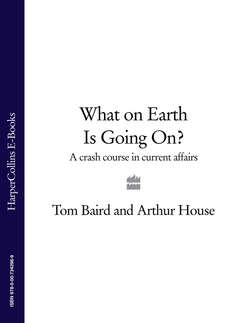Читать книгу What on Earth is Going On?: A Crash Course in Current Affairs - Arthur House - Страница 19
ОглавлениеCuba
Columbus claims Cuba
Christopher Columbus arrived on the north Caribbean island of Cuba in 1492—the same year he discovered America—and claimed it for Spain. From then until the close of the 19th century, Cuba remained in Spanish hands despite threats from pirates and other countries (including the British, who in 1762 occupied Havana for 11 months). In the late 19th century there were two wars of independence as Cuba sought to free itself from Spain. The first, from 1868-78, ended with the Spanish promising various economic and political reforms to the Cuban people, some of which never materialised. This led to another drive for independence inspired by the revolutionary and poet José Martí, and a second war, from 1895-8, which ended in victory for the Cubans after the US joined in and helped them defeat the Spanish.
When was independence established?
Cuba became an independent republic in 1902, and the following year signed the Platt Amendment with the US, which gave the US the right to intervene when necessary to maintain successful independence. One of the conditions in the agreement was for the new government to sell or lease land to the US that could be used for coaling or naval bases. The right of the US to intervene in Cuba’s internal affairs ended with another agreement in 1934, but their rights to maintain the naval base at Guantánamo Bay were kept.
Viva la Revolución!
The year before the 1934 agreement General Fulgencio Batista led a successful coup that propelled him to power. He ruled Cuba from 1933-44 and again from 1952-59. Shortly after regaining power, Batista was confronted by a band of socialist revolutionaries led by Fidel Castro who attempted, but failed, to overthrow the regime. Castro was arrested and jailed, but didn’t spend long there as all political prisoners were freed by Batista in 1955. When free, Castro went to Mexico to regroup, and in 1959 led a successful revolution flanked by his brother Raul and Ernesto ‘Che’ Guevara. Che was an Argentinean doctor, renowned as a key strategist in the revolutionary struggle and for his bravery as a guerrilla commander. As teenagers all over the world will know, Che has come to embody the spirit of the socialist revolution. He was just 39 years old when he was hunted down and killed by CIA-backed Bolivian special forces while leading a group of Marxist-Leninist guerrillas in Bolivia in 1967.
Getting through the Cold War
After the successful revolution, relations soured between the US and Cuba, which officially became a communist state in 1961 and began developing close ties with the USSR (Cuba is now one of only five remaining communist states, along with China, North Korea, Laos and Vietnam). That same year the US backed the unsuccessful ‘Bay of Pigs’ invasion, so named after the inlet on the island’s south coast where a group of Cuban exiles landed in an attempt to topple Castro and his regime. In October 1962 the Cuban Missile Crisis brought the world to the brink of nuclear war: in a bid to protect Cuba from further American threats, Castro had allowed Soviet premier Khrushchev to station nuclear missiles on the island, from where the USSR could potentially hit New York or Washington. When the US spotted the missiles, they imposed a naval blockade on Cuba, and after tense negotiations they were removed in return for American missiles being withdrawn from Turkey. After this narrowly averted crisis, Cuba continued to benefit from aid and trade with the USSR until its collapse in 1991.
From one brother to another
Despite the loss of support from the USSR, Cuba’s old revolutionary guard pushed on doggedly. Some measures have been introduced to improve conditions in the country, and tourism has been encouraged to replace the lost revenue. However, there are internal frustrations from citizens locked in what they regard as a weary and run-down Communist state. The international community has also widely condemned the human rights situation, from the tightly controlled media to the arrests of dissidents legally protesting against the one-party regime. Fidel retained power until 2006 when abdominal surgery forced him to hand over the reins to his brother Raul, who officially became president in early 2008. Fidel is thought to have terminal cancer and is not expected to survive for much longer: many feel that a political system and a regime built and dominated for so long by one man will not be able to survive his death, fuelling speculation that Cuba would undergo major economic and political reforms that might lead to the US lifting its trade embargo with the island and attempting to exert its influence over it.
What is Guantánamo Bay?
Guantánamo Bay, on Cuba’s south-east coast, is home to a US Naval base. This 45-square-mile area was originally leased by the US government a few years after they defeated the Spanish.
